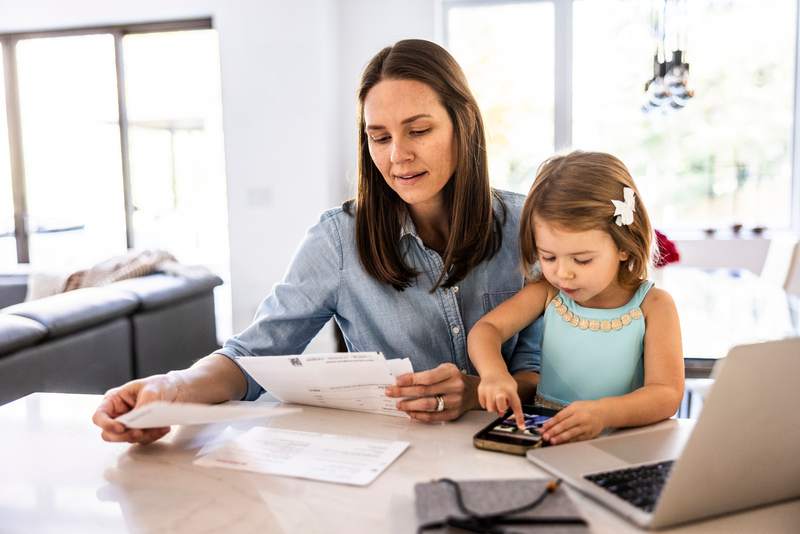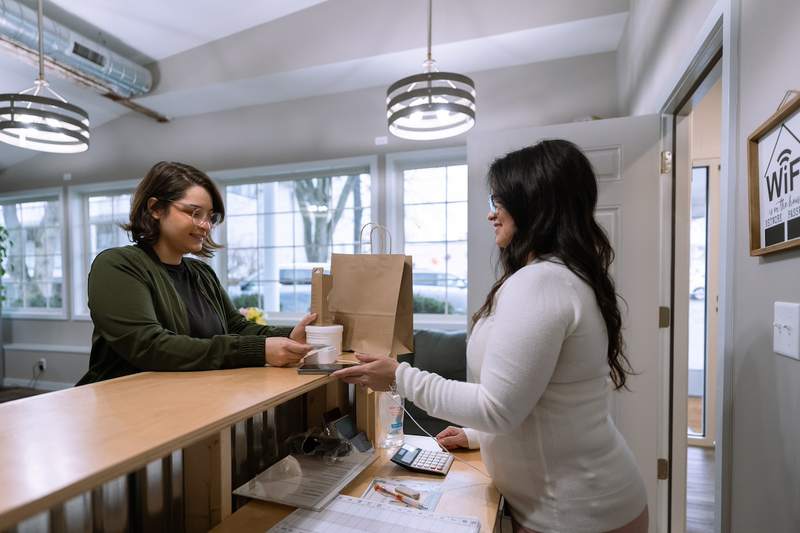It can be difficult to balance your wants and needs based solely on the amount of cash you have on hand. If you’re planning a wedding or ready for your next big vacation or you just want to finally tackle a home renovation project, a loan could be the answer.
Certain types of loans, known as secured loans, require you to include an asset as collateral in case of default, but there’s another option that doesn’t require you to risk losing a valuable asset like your home or car. That option is an unsecured loan.
Let’s take a closer look at what an unsecured loan is, along with common types of unsecured loans and their uses. Then, we’ll turn our attention specifically to unsecured personal loans, as we consider their advantages, disadvantages and more.
What Is An Unsecured Loan?
Instead of requiring a prospective borrower to offer a prized asset as collateral, an unsecured loan is attainable upon a lender’s close review of the borrower’s credit score, credit history and debt-to-income ratio (DTI).
The most common types of unsecured loans are:
- Personal loans: Distributed in a lump sum, unsecured personal loans offer fixed interest rates and a monthly repayment plan, and they may include origination fees.
- Student loans: These loans are used for education-related expenses such as tuition, room and board, and textbooks.
- Credit cards: Credit cards give borrowers a line of credit for various expenses but often come with higher, variable interest rates.
A big benefit of unsecured loans is that the funds from these loans can be used in whatever way you choose. Common uses of unsecured personal loans are:
- Debt consolidation
- Medical expenses
- Home improvement projects
- Car repairs and expenses
- Vacations
- Wedding expenses
- Moving and relocation costs
- Business expenses
Unsecured personal loans can typically be for any amount in the $1,000 – $100,000 range, but that’s no guarantee of being approved for any certain amount. Up next, we��’ll continue to focus on unsecured personal loans, beginning with a look at how they work.
See What You Qualify For
Buy A Home
Discover mortgage options that fit your unique financial needs.

Refinance
Refinance your mortgage to have more money for what matters.
Tap Into Equity
Use your home’s equity and unlock cash to achieve your goals.
How Unsecured Personal Loans Work
Unsecured personal loans, sometimes known as “signature” loans, are a type of installment loan with a fixed interest rate and a repayment plan involving equal monthly installments. The loan terms are generally 2 – 5 years.
You’ll first need to complete an application and receive lender approval. After approval, you’ll receive your loan terms, repayment terms and the total loan amount you’re approved to borrow.
Depending on your lender, the funds may be available the same day you’re approved or within a few business days. The loan is typically a direct deposit available in one lump sum and begins accruing interest in the first month.
Making on-time payments can positively impact your credit. However, if you default on your loan or have multiple hard inquiries, it will negatively affect your credit score and reflect on your credit history.
Missed payments make it difficult for the lender to get their money back since an unsecured personal loan requires no collateral. As a result, unsecured personal loans tend to come with higher interest rates and stricter qualifications than secured personal loans.
Pros And Cons Of Unsecured Personal Loans
An unsecured personal loan offers many benefits, but what about the drawbacks? Here are some of the biggest advantages and disadvantages of this loan type.
Pros | Cons |
|---|---|
No collateral required | Origination fees sometimes up to 10% |
Fixed interest rates | Higher interest rates |
Equal monthly payments | Possible damage to your credit score if you miss payments or default |
Convenient and quick application process | Tough qualification requirements based on creditworthiness |
How To Apply For An Unsecured Personal Loan
Like with any big financial decision, it’s important to consider all your options when choosing a lender. You can get a personal loan through banks, credit unions and online lenders. When deciding if an unsecured personal loan is right for you, you’ll want to consider how much loan you can afford and how much money you need.
Calculate any potential fees, including origination fees, possible late fees and prepayment penalties. Totaling up these costs can give you a better idea of how much you’ll pay over the entire duration of your loan. Interest will accrue on your unsecured personal loan as time passes, so you’ll be paying back more than just the lump sum you borrowed.
Unsecured Personal Loan Qualifications
Being approved for an unsecured personal loan often requires satisfying a rather stiff credit score requirement and DTI requirement. You’ll typically need a minimum credit score of around 640 and a DTI below 36%, but exact requirements will vary by lender.
In addition, be prepared to provide your lender with the following personal info:
- Full name
- Current address
- Income information
- Social Security number
- Date of birth
If you have a somewhat low credit score, your lender may require a co-signer before granting loan approval. Without a co-signer, you may need to consider another option – like a secured personal loan, for example.
Find A Mortgage Today and Lock In Your Rate!
Get matched with a lender that will work for your financial situation.
Unsecured Personal Loan FAQs
There’s a lot to think about when considering an unsecured personal loan – or an unsecured loan of any kind – so here are answers to some frequently asked questions.
What does it mean when a loan is unsecured?
Unsecured loans don’t require collateral and are largely based on the borrower’s creditworthiness. This means borrowers don’t have to offer up any assets, like their home or vehicle, to secure the loan.
When is an unsecured loan worth it?
Unsecured loans are often worth it for people with good or excellent credit and a low DTI that allows them to make on-time monthly payments. If this is you and you need a large sum of cash to make an expensive purchase or consolidate high-interest debt, an unsecured loan can be a great option.
Since unsecured loan approval is so dependent on creditworthiness, a better credit score will mean a better chance of being approved and getting favorable loan terms.
What are examples of unsecured loans?
Unsecured loans come in several forms, including personal loans, credit cards and student loans.
Are personal loans secured or unsecured?
Personal loans are available as unsecured or secured. Secured personal loans require borrowers to offer collateral, but this can reduce their interest rate on the loan and improve their chances of approval if they have a less-than-ideal credit score.
What are some alternatives to unsecured personal loans?
If an unsecured personal loan doesn’t meet your needs, alternative options you might consider include a:
- 0% APR credit card: Certain credit cards will offer an incentive of 0% APR for a limited time. Consider opening a new credit card to fund your big purchase and make payments interest-free before the 0% APR promotion ends.
- Home equity line of credit (HELOC): If you have a decent amount of equity in your home, this type of revolving credit might be suitable for your situation. HELOC funds can be used for home improvements, large purchases, education costs or even consolidating debt. Depending on how much equity you have, you may be able to take out more money at a lower cost than you’d pay with an unsecured personal loan.
The Bottom Line
Unsecured personal loans allow you to take control of your finances through a simple, convenient and fast process. These loans have fixed interest rates and monthly payments that don’t change, and you can use them to achieve a variety of financial goals.
Find A Mortgage Today and Lock In Your Rate!
Get matched with a lender that will work for your financial situation.

Victoria Araj
Victoria Araj is a Staff Writer for Rocket Companies who has held roles in mortgage banking, public relations and more in her 15-plus years of experience. She has a bachelor’s degree in journalism with an emphasis in political science from Michigan State University, and a master’s degree in public administration from the University of Michigan.












